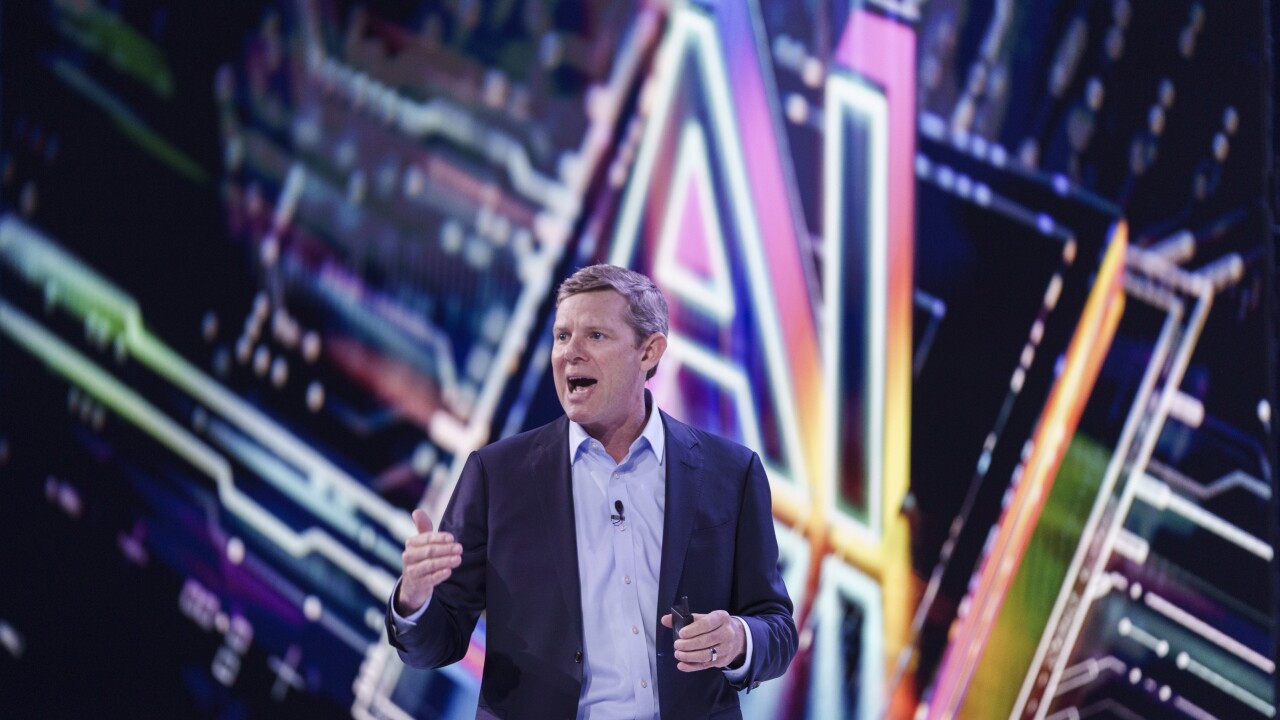
The escalated interest in artificial intelligence that OpenAI started over a year ago when it made its ChatGPT public has led to a relatively new C-suite role at banks: the chief AI officer.
This isn't always the exact job title, but at the majority of large banks, someone at the top of the organization is being given responsibility for AI projects. According to the Institute of International Finance, 66% of banks worldwide have a C-suite manager overseeing AI or machine learning. In the U.S., 75% of institutions have already appointed a C-suite manager responsible for AI/machine learning ethics and governance.
Examples of top AI executives include Teresa Heitsenrether, chief data and analytics officer of JPMorgan Chase; Chintan Mehta, CIO for digital, innovation and strategy at Wells Fargo; and Dominic Venturo, chief digital officer at U.S. Bank.
"What it shows is the seniority of the level of focus at this stage, and the importance to the executive level of the financial institutions on this issue, particularly around ethics and governance," said Jessica Renier, managing director of the digital finance department of the IIF, in an interview.
These banks are signaling, internally and to the outside world including analysts and shareholders, that they are taking AI seriously.
"Over the last year and a half, since ChatGPT came out, it's gotten a very high level of visibility," said Jim Mortensen, strategic advisor at Datos Insights, in an interview. "It's for that level of cachet that they feel like they have to have somebody looking at it, because they're going to be asked about it and genuinely they want to know how to fully exploit the technology for their benefit."
These banks also might be elevating the AI oversight role to show regulators they care about using the technology responsibly and ethically.
What a C-level AI officer does
At U.S. Bank, Dominic Venturo has overseen AI for several years, as part of his role leading innovation, research and development. His group also runs the bank's mobile apps, websites and enterprise solutions.
"Machine learning has been active in the banking industry for over a decade, especially in the fraud space and the risk management spaces," Venturo pointed out in an interview.
His team develops products across the bank's businesses, applying a common governance framework for emerging technologies. The framework is intended to ensure that where artificial intelligence or machine learning is applied to problems, it's fair, responsible and ethical. AI has to do no harm and deliver predictable, repeatable results for the bank.
In one project, his team has been working to transition the bank away from the London Interbank Offered Rate, a common rate benchmark that regulators are telling banks to stop using, to the Secured Overnight Financing Rate.
"There are thousands of contracts that need to be assessed and analyzed, and an appropriate set of actions taken," Venturo said. "So using machine learning, artificial intelligence technologies to be able to do the work of scanning and understanding, and then creating the list of things for experts to review, allows us to save thousands of people hours in terms of doing the hard work first, reading and analyzing, and then being able to focus on what to do next. That would be an example of how a business identifies a problem, the engineers develop the solution, and then in the end, we've got a tool that we can use that makes that more efficient."
In projects like these, AI does some of the grunt work, leaving knowledge workers to spend their energy on the tasks that require more expertise.
Vetting and executing AI projects
Venturo's team educates product organizations in the bank on what he calls "the art of the possible'' of what can be done with AI and machine learning.
Then when a business group identifies a problem they need help with, a team triages those requests, looking at it from different lenses: "Is it technically feasible? Has it been commercially proven? Do we know how to solve this problem? If we do and it's worth going after, then we assign resources to go after it. If we don't know how to do it, and it's still an interesting, tractable, sizable problem, then we give it to the research and development team to say, can we figure out a solution for this?" Venturo said.
"If you've got the right structure and process and you understand the art of the possible, then you can create the funnel which allows you to synthesize these things and then decide what it is that you should do next," he said.
Having one person in charge can help break through some of the bureaucracy and permafrost that settles in any large organization.
Before taking the top AI-related role, Venturo was the bank's chief innovation officer for 13 years.
"I was knee deep in emerging technology, some of which never came to fruition," Venturo said. "That's just part of that business. But being able to look at the core bits of the technology and understand how they could be deployed, and then what you might do with them, helps you build a framework for technical feasibility, scalability and reliability."
With the growing interest in generative AI, it seems inevitable that some banking jobs will change while others will be eliminated entirely.
U.S. Bank has a "very large list" of possible use cases for traditional and advanced AI, Venturo said. In software development, AI may be used to help write the documentation that goes with code the bank's programmers write.
"We have opportunities to make our processes more efficient, simplify operations, reduce risk, reduce errors," Venturo said.
This jibes with the IIF's research, which found that 100% of U.S. institutions see generative AI most likely to be used for internal, non-customer-facing deployments in the next 12 months.






